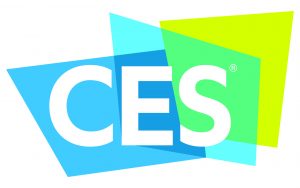 The recurring theme at this year’s CES will be that voice control and natural language input are the preferred way for consumers to take charge of their electronics. That includes household gadgets, mobile devices and automotive infotainment consoles. Companies from car makers, to smart home hardware providers, to robotics manufacturers, to kitchen appliance brands are showing off new voice interfaces for their products.
The recurring theme at this year’s CES will be that voice control and natural language input are the preferred way for consumers to take charge of their electronics. That includes household gadgets, mobile devices and automotive infotainment consoles. Companies from car makers, to smart home hardware providers, to robotics manufacturers, to kitchen appliance brands are showing off new voice interfaces for their products.
As if on cue, Coldwell Banker Real Estate LLC and Vivint Smart Home released a new survey indicating that 72% of Americans with smarthome devices want the ability to control them by voice. Parents are at the top of the list of those who want to use voice to control their smart appliances and assistants. A full 81% of parents surveyed appreciate the convenience offered by voice control. Parents have their hands full, so the survey results make sense.
Brands are taking note of shifting consumer preferences for voice control. Whirlpool is using CES 2017 to announce new voice controls for its appliances, including ovens, washer and driers, and refrigerators. Whirlpool has already worked successfully with Amazon to offer consumers Dash replenishment buttons for automated ordering of laundry detergent and other appliance-related consumables.
Rather than embedding voice control directly into its products, Whirlpool has turned to Amazon again to integrate with Alexa Voice Service. Consumers can connect their Alexa-enabled Echo, Dot, or other device via WiFi to their home appliance. Once connected, users can ask Alexa to set the temperature on their ovens, tell them how much time is left on the current wash cycle, or change refrigerator temperature settings.
This is all part of an “Alexa Everywhere” initiative that Amazon has launched to steal the march from its obvious “metabot” competitors: Google’s Assistant, Microsoft’s Cortana and Apple’s Siri. Three Chinese TV manufacturers (Westinghouse, Element, and Seiki) have integrated Alexa for voice control via Fire TV. Samsung has put it in its game console. And consumers will also be able to talk to refrigerators from LG, smartphones from Huawei and even an Echo look-alike from Lenovo called Smart Assistant.
As voice control permeates the home, consumers are growing more comfortable with voice interactions with brands both inside and outside of traditional IVR settings. When calling into an IVR, many customers now expect to be able to use their own words to get answers or to be routed to the correct department. When engaging with a virtual agent, customers expect the agent to understand what they are saying or typing.
2017 will see further growth and entrenchment of conversational user interfaces, both text and voice. If CES 2017 is any indication, we can expect to be talking to more and more of the objects around us in the coming months.
Categories: Conversational Intelligence, Intelligent Assistants

 Getting It Right: What AI Agents Actually Mean for Customer Support (Webinar)
Getting It Right: What AI Agents Actually Mean for Customer Support (Webinar)  Beyond the Basics: How AI Is Transforming B2B Sales at TP
Beyond the Basics: How AI Is Transforming B2B Sales at TP  Five9 Launches Agentic CX: Toward AI Agents That Reason and Act
Five9 Launches Agentic CX: Toward AI Agents That Reason and Act  2025 Conversational AI Intelliview: Decision-Makers Guide to Self-Service & Enterprise Intelligent Assistants
2025 Conversational AI Intelliview: Decision-Makers Guide to Self-Service & Enterprise Intelligent Assistants